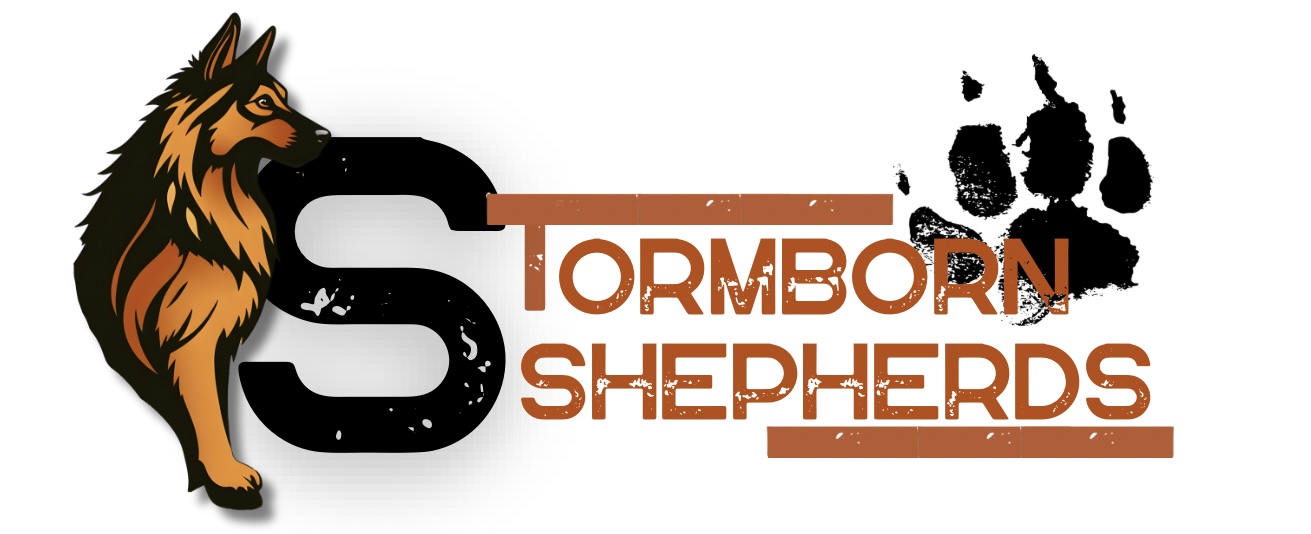The History of the German Shepherd Dog: From Sheep Herding to Global Icon
The German Shepherd Dog (GSD) is one of the most intelligent, versatile, and recognizable dog breeds in the world. Known for their unwavering loyalty, exceptional work ethic, and keen intelligence, German Shepherds have played roles as herding dogs, war heroes, service animals, and beloved companions.
The breed's history is a fascinating journey, starting from humble origins as a working farm dog in Germany to becoming one of the most widely utilized breeds in police, military, and service work worldwide. Let's take a deep dive into the history of the German Shepherd Dog, tracing its development, key figures in its creation, and how it became the remarkable breed it is today.
Origins: The Need for a Superior Herding Dog
Late 19th Century: The Evolution of Herding Dogs in Germany
Before the German Shepherd Dog was officially established, Germany had a wide variety of regional herding dogs. These dogs were bred to protect and guide livestock, particularly sheep, across the rugged countryside. However, there was no standardization, and different regions had dogs with varying traits.
As industrialization increased in Germany, the need for herding dogs began to decline. At the same time, dog breeding became more structured, with efforts focused on developing a superior, standardized working dog that could excel in multiple roles beyond herding.
Captain Max von Stephanitz: The Founder of the German Shepherd Dog & his Vision for the Ideal Working Dog
The modern German Shepherd Dog owes its existence to one man: Captain Max von Stephanitz, a German cavalry officer and former student at the Berlin Veterinary College.
Stephanitz had a passion for dog breeding and believed that dogs should be bred for working ability rather than just appearance. He admired German herding dogs for their intelligence, stamina, and versatility but wanted to create a standardized breed that could be used for more than just herding.
In 1899, while attending a dog show in Karlsruhe, Germany, von Stephanitz saw a wolf-like dog named Hektor Linksrhein. This dog was a perfect example of what he envisioned; intelligent, athletic, strong, and obedient.
Impressed by Hektor's traits, von Stephanitz purchased the dog immediately and renamed him Horand von Grafrath. Horand became the first officially recognized German Shepherd Dog and was registered as SZ1 in the newly created breed registry.
Von Stephanitz then founded the Society for the German Shepherd Dog, in 1899, which remains the breed's official governing body in Germany today.
Early Development and Refinement of the Breed
The Expansion of the Breed Standard
Von Stephanitz and his team carefully selected and bred dogs that met his ideal working standard, prioritizing:
- Intelligence
- Loyalty
- Strength & Stamina
- Obedience & Trainability
- Protective Instincts
Herding to Service Work
While the German Shepherd was originally intended for herding, von Stephanitz foresaw a future where the breed could serve in police, military, and protection work. He worked closely with German police and military officials to introduce the breed into service roles, proving their effectiveness as guard dogs, messengers, search-and-rescue dogs, and even Red Cross dogs during wartime.
The Role of German Shepherds in World Wars
World War I (1914-1918): The GSD's First Military Deployment
During World War I, German Shepherds served in the German military as messenger dogs, sentries, rescue dogs, and supply carriers. Their loyalty, bravery, and intelligence caught the attention of foreign soldiers, particularly those from Britain and the United States, who brought German Shepherds home after the war.
World War II (1939-1945): The Breed Gains Worldwide Recognition
By World War II, the German Shepherd had already gained a strong reputation in police and military work worldwide. They served in various roles, including:
- Tracking enemy movements
- Detecting mines and explosives
- Delivering messages across battlefields
- Guarding prisoners and military bases
After the war, all things associated with Germany were met with suspicion, and the breed's name was temporarily changed to Alsatian Wolf Dog in Britain (a name that persisted until 1977). However, in the U.S. and elsewhere, the breed's reputation as a loyal, hard-working companion continued to grow.
The Rise of the German Shepherd in America
Rin Tin Tin: Hollywood's First Canine Superstar
One of the most significant moments in the breed's popularity was the rise of Rin Tin Tin, a German Shepherd puppy rescued from a World War I battlefield by an American soldier, Lee Duncan.
Duncan brought Rin Tin Tin to the U.S., where the dog became a Hollywood sensation, starring in numerous silent films and making the German Shepherd one of the most desired breeds in America.
German Shepherds in Law Enforcement & Service Work
The breed's reputation as a police and service dog continued to grow, and by the mid-20th century, German Shepherds were the top choice for police K-9 units, military working dogs, and service animals for the visually impaired.
Today, German Shepherds are widely used in law enforcement, search and rescue, therapy work, and personal protection.
Modern-Day German Shepherds: A Global Breed
According to the American Kennel Club (AKC), German Shepherds are consistently ranked among the top 5 most popular dog breeds in the U.S. Their intelligence, adaptability, and loyalty make them ideal for:
- Police and military work
- Search and rescue missions
- Service and therapy roles
- Competitive dog sports (Schutzhund, agility, obedience trials)
- Family companionship and protection
Breed Variations
Since the breed's creation, different bloodlines and breeding goals have led to variations, including:
- American Show Line German Shepherds: Bred for conformation shows, with sloped backs and a more refined appearance.
- European Show Line German Shepherds: Larger, straighter backs, and bred for working ability as well as structure.
- Working Line German Shepherds: Bred for intelligence, strength, and drive, commonly used in police and military work.
From its humble beginnings as a herding dog in 19th-century Germany to becoming one of the most iconic, loyal, and hardworking breeds in the world, the German Shepherd has proven its intelligence, adaptability, and devotion time and time again.
With a strong foundation built by Max von Stephanitz, the breed has evolved and adapted to meet the needs of modern society, excelling in police work, service roles, and companionship.
Whether you admire them for their bravery, intelligence, or sheer beauty, one thing is certain, the German Shepherd will continue to be a breed loved and respected across the world for generations to come.
 |
Southwest Florida (443) 800-5709 |
